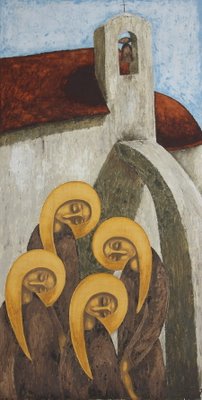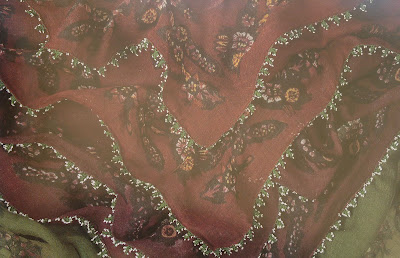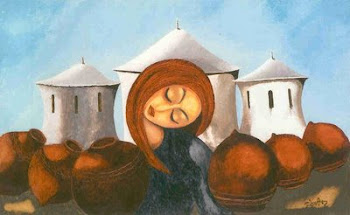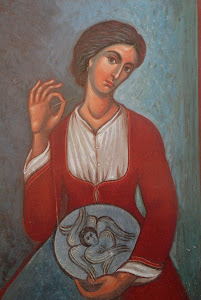
Hellenic Cypriot folk art.
16 posts
• Page 2 of 2 • 1, 2
-

yialousa1971 - Main Contributor

- Posts: 6273
- Joined: Sat Aug 30, 2008 2:55 pm
- Location: With my friends on the Cyprus forum
-

yialousa1971 - Main Contributor

- Posts: 6273
- Joined: Sat Aug 30, 2008 2:55 pm
- Location: With my friends on the Cyprus forum
-

yialousa1971 - Main Contributor

- Posts: 6273
- Joined: Sat Aug 30, 2008 2:55 pm
- Location: With my friends on the Cyprus forum
-

yialousa1971 - Main Contributor

- Posts: 6273
- Joined: Sat Aug 30, 2008 2:55 pm
- Location: With my friends on the Cyprus forum
Re: Hellenic Cypriot folk art.
Womens-headscarves of Cyprus












Mandela is the general name for headscarf in Cyprus. However, each headscarf has a different name according to its design and colour. The most commonly used mandela is known as "tsemberi", which is the traditional women's headscarf of Cyprus and is still worn by many of the older women from the rural areas of the island. At one time, almost every Cypriot woman, once she had reached the age of 13-14, wore a headscarf. The wearing of a headscarf was not only part of the women's traditional costume, but it also had a symbolic meaning since it indicated the passage of a girl from childhood to womanhood. This passage to womanhood was called "scoufoma", were upon, a girl covered her head and from that time on she never uncovered it, many times even when sleeping at night.
Young women would wear red headscarves - a bright red until about the age of 30 and darker vinegar red (xidi) for 30 to 50 year-olds. After the age of 50 a woman would wear a dark purple or brawn scarf, unless she was in mourning or a widow, in which case she would wear a black scarf known as "mereza". The only exception to the rule would be if a woman was working outside n the fields during the hot summer months. Then she would wear a white scarf called "kouroukla" which was pulled well forward over her face to reflect the heat and protect her skin from the sun's burning rays.
The tsemberi version of the mandilas was hand-printed using natural dyes that become more beautiful with washing. Although the colours and patterns are traditional, and there were many of them, only a few remained up to present times.The bright red tsemberia had seized to be produced many decide ago and so were the greens that were so popular in the Morphou area of Cyprus. The only colour that survived to the present was the dark purple.This is because the younger women had stopped wearing the bright red and darker red scarfs once they started wearing European style dress and no-longer covered their head. The patterns too had disappeared over time. The most popular pattern used up to the present was the simple and very subtle neo-classical -style wreath of flowers that decorated the border of the scarf.
In contrast, the scarves of the 19th and early 20th century were highly decorated with elaborate floral designs in a variety of shades and colours. Flowers of almond and lemon trees, narcissus, tulips, lilies and poppies were all depicted, somewhat abstract but still recognizable as such.
Until the mid-seventies the edges of the scarves were usually rolled and finely stitched, and many times a delicate border of handmade lace would be added. Turkish Cypriot women, who preferred to work at home, did this job. After the Turkish invasion of the island in 1974 it was no longer possible to use their skills - so a fine edging of machine made lace was used to finish the scarf.
The mantilas were not always made locally. During the time of Ottoman Rule, they were brought to Cyprus from Constantinople, where they were made by Armenian craftsmen. Long ago the patters were painstakingly embroidered by hand. These scarves were much favoured by the wealthy ladies. They were some-times very elaborate, and worn with real flowers such as jasmin and geranium. But embroidery was a costly and time-consuming process that made the scarf too expensive for most rural people. Block- printing, a much cheaper and easier form of decoration, came into fashion.
By around 1908 the demand for mandelas was so great that a enterprising Cypriot brought a team of Armenian experts to the island to teach the Cypriots their craft. The industry boomed.
When Nicos Kakoullis died in May 2003, the man described as "The Last of the Mantilla Makers", he took to his grave the secrets of centuries of master dyers. His death also marked the demise of the last mantilla makers industry. His had been the last workshop producing these intricate works in Cyprus.
The mantilas of Cyprus were also deeply connected to folk tradition and superstitions. They were used in special ceremonies during weddings and in folk medical practices. Their main use, however, always remained, the decoration of women's heads - a good mantilla for Sunday, and one of lesser value for everyday use.
http://noctoc-noctoc.blogspot.co.uk/201 ... arves.html












Mandela is the general name for headscarf in Cyprus. However, each headscarf has a different name according to its design and colour. The most commonly used mandela is known as "tsemberi", which is the traditional women's headscarf of Cyprus and is still worn by many of the older women from the rural areas of the island. At one time, almost every Cypriot woman, once she had reached the age of 13-14, wore a headscarf. The wearing of a headscarf was not only part of the women's traditional costume, but it also had a symbolic meaning since it indicated the passage of a girl from childhood to womanhood. This passage to womanhood was called "scoufoma", were upon, a girl covered her head and from that time on she never uncovered it, many times even when sleeping at night.
Young women would wear red headscarves - a bright red until about the age of 30 and darker vinegar red (xidi) for 30 to 50 year-olds. After the age of 50 a woman would wear a dark purple or brawn scarf, unless she was in mourning or a widow, in which case she would wear a black scarf known as "mereza". The only exception to the rule would be if a woman was working outside n the fields during the hot summer months. Then she would wear a white scarf called "kouroukla" which was pulled well forward over her face to reflect the heat and protect her skin from the sun's burning rays.
The tsemberi version of the mandilas was hand-printed using natural dyes that become more beautiful with washing. Although the colours and patterns are traditional, and there were many of them, only a few remained up to present times.The bright red tsemberia had seized to be produced many decide ago and so were the greens that were so popular in the Morphou area of Cyprus. The only colour that survived to the present was the dark purple.This is because the younger women had stopped wearing the bright red and darker red scarfs once they started wearing European style dress and no-longer covered their head. The patterns too had disappeared over time. The most popular pattern used up to the present was the simple and very subtle neo-classical -style wreath of flowers that decorated the border of the scarf.
In contrast, the scarves of the 19th and early 20th century were highly decorated with elaborate floral designs in a variety of shades and colours. Flowers of almond and lemon trees, narcissus, tulips, lilies and poppies were all depicted, somewhat abstract but still recognizable as such.
Until the mid-seventies the edges of the scarves were usually rolled and finely stitched, and many times a delicate border of handmade lace would be added. Turkish Cypriot women, who preferred to work at home, did this job. After the Turkish invasion of the island in 1974 it was no longer possible to use their skills - so a fine edging of machine made lace was used to finish the scarf.
The mantilas were not always made locally. During the time of Ottoman Rule, they were brought to Cyprus from Constantinople, where they were made by Armenian craftsmen. Long ago the patters were painstakingly embroidered by hand. These scarves were much favoured by the wealthy ladies. They were some-times very elaborate, and worn with real flowers such as jasmin and geranium. But embroidery was a costly and time-consuming process that made the scarf too expensive for most rural people. Block- printing, a much cheaper and easier form of decoration, came into fashion.
By around 1908 the demand for mandelas was so great that a enterprising Cypriot brought a team of Armenian experts to the island to teach the Cypriots their craft. The industry boomed.
When Nicos Kakoullis died in May 2003, the man described as "The Last of the Mantilla Makers", he took to his grave the secrets of centuries of master dyers. His death also marked the demise of the last mantilla makers industry. His had been the last workshop producing these intricate works in Cyprus.
The mantilas of Cyprus were also deeply connected to folk tradition and superstitions. They were used in special ceremonies during weddings and in folk medical practices. Their main use, however, always remained, the decoration of women's heads - a good mantilla for Sunday, and one of lesser value for everyday use.
http://noctoc-noctoc.blogspot.co.uk/201 ... arves.html
-

yialousa1971 - Main Contributor

- Posts: 6273
- Joined: Sat Aug 30, 2008 2:55 pm
- Location: With my friends on the Cyprus forum
-

yialousa1971 - Main Contributor

- Posts: 6273
- Joined: Sat Aug 30, 2008 2:55 pm
- Location: With my friends on the Cyprus forum
16 posts
• Page 2 of 2 • 1, 2
Who is online
Users browsing this forum: No registered users and 0 guests















